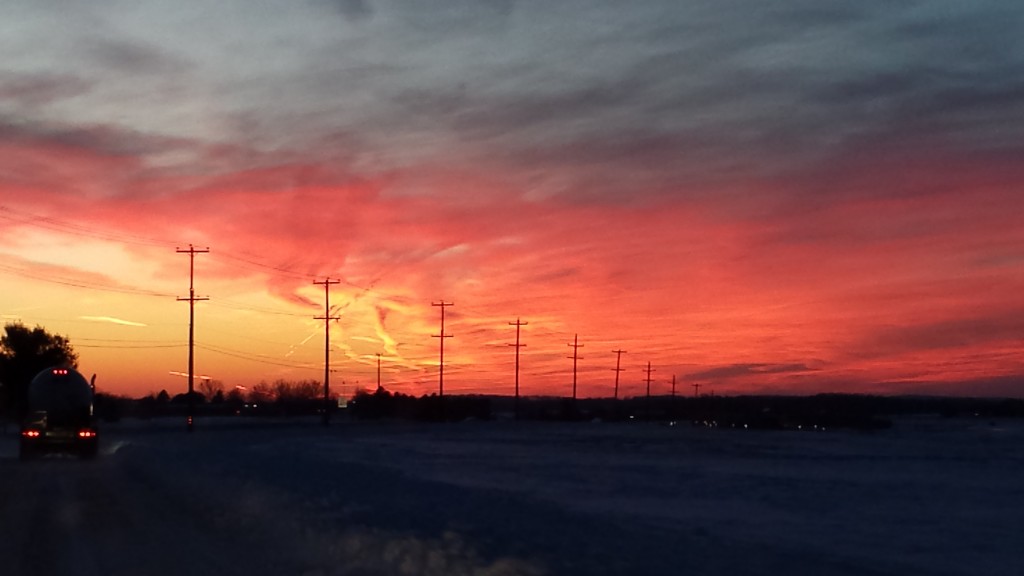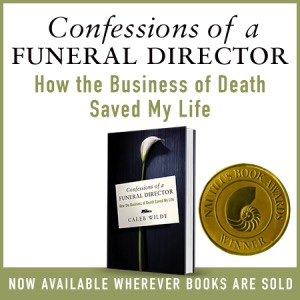Religious Ritual
A rosary and a quiet good deed amplified
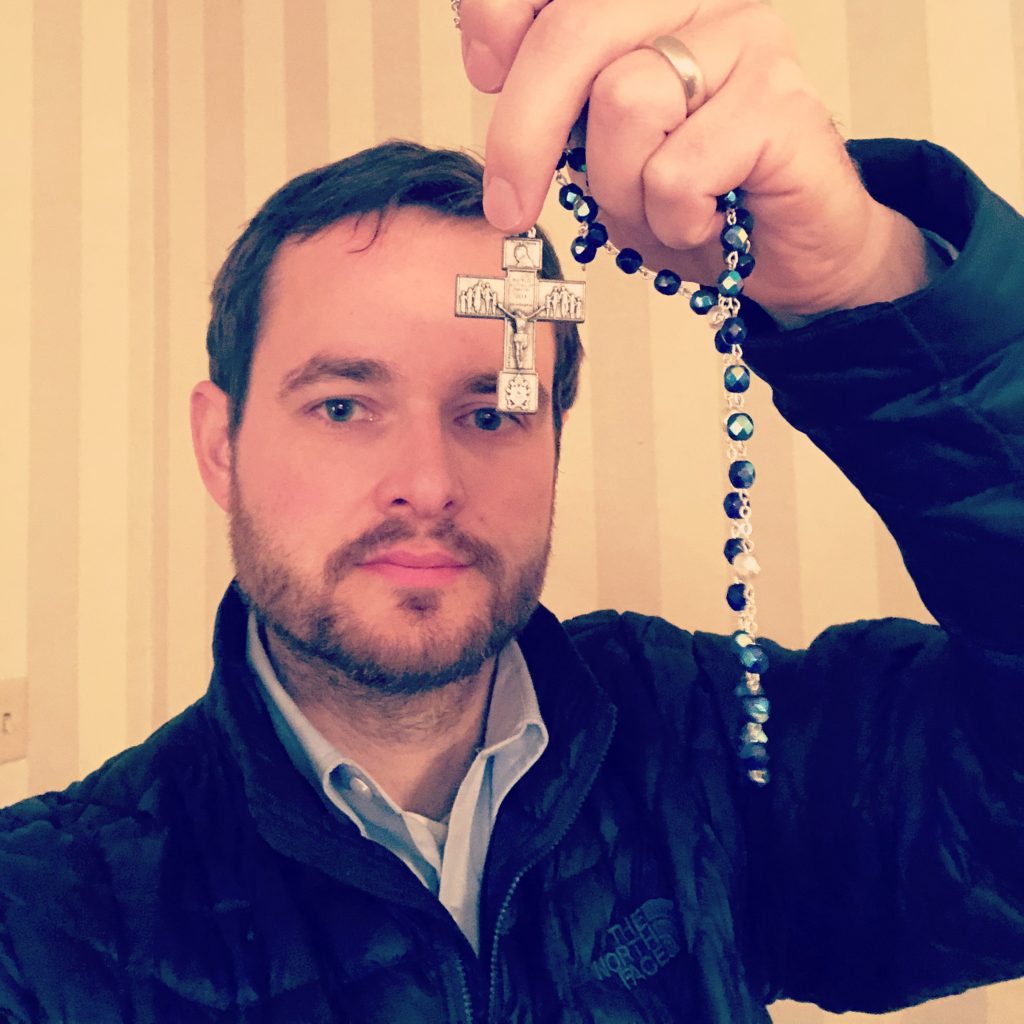
Good people are everywhere. And bad people are everywhere. That mix is in our families, politics . . . hell, it’s even in our own hearts, AND that mixture of good and bad is in the church.
—
I’m not Catholic. I serve Catholics on a semi-regular basis, and they seriously have THE best funeral luncheons. I even go up to receive Father’s blessing during the funeral Mass’ Holy Communion.
—
This past year more than 300 current and former Pennsylvania (my home state) priests were accused of sex abuse. Over the course of seven decades, these priests weaponized their faith to steal innocence from more than 1,000 children, unspeakable crimes that were often covered up by church leaders.
—
I got a phone call this morning from the daughter of the deceased who asked us if we had any rosaries we could put in the casket. I told her we do, and that I’d wrap one around the hand of her loved one. A few minutes later she called back with a question, “Do you know if the rosary has been blessed?” “Umm,” I paused for a second because I didn’t know rosaries were supposed to be blessed, “I don’t think so?” “Can you make sure it’s blessed?” she concluded.
—
I called the Catholic rectory to see if I could stop by to have Father bless it. The church secretary answered the phone, “Father’s not here, but I have something for you that I’ll bring over.”
—
A few hours later she was at the front door. “This rosary,” she said, “was blessed by the Pope when he visited Philadelphia in 2015.” I responded, “What? Really? And you’re sure they can have it?” She played it off like it wasn’t a big deal. But it IS a big deal, something the family of the deceased will never forget.
—
Everywhere we go, there are good people and bad people. We want it to be one or the other, especially when it comes to groups we love to chastise. “All Republicans are bad.” Or, “All Democrats are bad.” Or, “All Muslims are jihadists.” Life, and the people in it, are SO much more nuanced that the black and white categories we love to use.
—
Good deeds happen every day, they’re just quieter than the bad ones. Never be quiet about injustice and amplify the good because we all need to hear the whole story.
Finding the energy of our dead during the holiday season
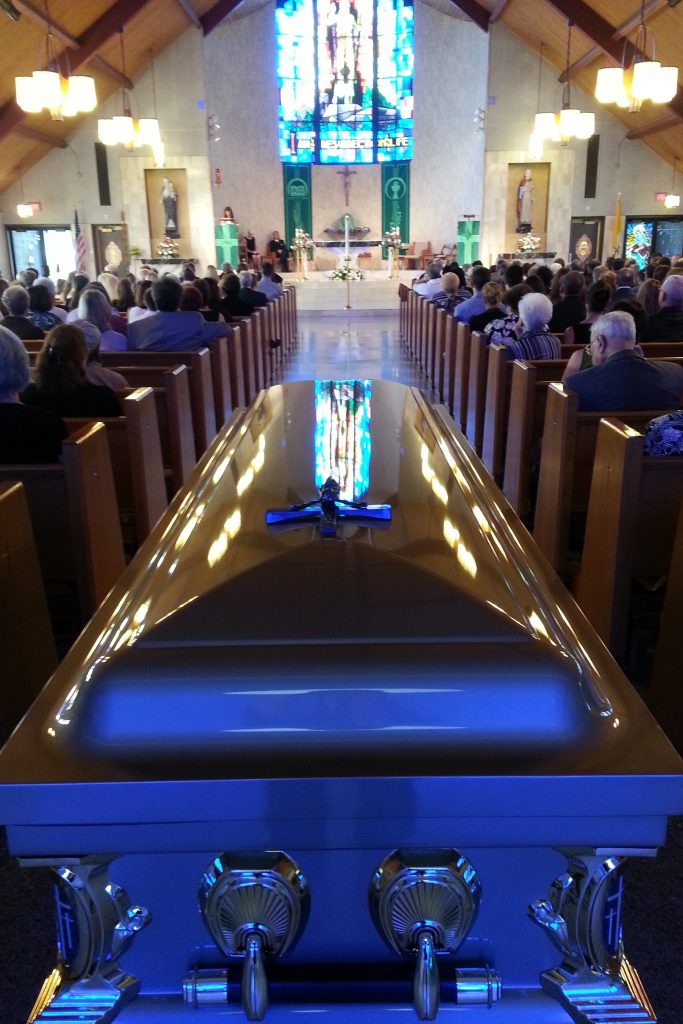
Get ready for a new age-y and weird thought that isn’t nearly as new age-y and weird as it sounds.
—
The energy of our dead surround us in everything we do, especially during the holidays.
—
I know, whenever we talk about “energy” it’s super ambiguous and unquantifiable, and it sounds like something a Californian yogi (who lived in Tibet for a season and has a Reiki session every Wednesday night) would say over a vegan dinner (and no shade towards vegans, yogis, reiki practitioners, or Californians, because I’m practically a vegan, who’s married to a Californian, has a basic yoga practice, and would love to try Reiki).
—
When you make a holiday recipe that was given to you by your late grandmother, that’s the energy of your dead.
—
When you decorate with Christmas ornaments that are family heirlooms, that’s the energy of the dead.
—
When your family gets together for a holiday dinner, THAT is the energy of the dead because each of you are there, each of you exists because you’ve been carried there by your ancestors.
—
It’s natural to think that the energy of our dead only dwells at funerals and cemeteries, but I’d like to think their energy is particularly strong right now . . . during the holiday season. It’s in your cookies, your traditions, your decorations, the side dishes, the love, the giving, the hugs . . . it’s in the season, surrounding us.
—
As the holiday season kicks off, here’s a friendly reminder that the energy of our dead isn’t isolated to funerals and cemeteries, but it’s here, now, during this season. Look for it. Embrace it.
The Break that Binds: The Central Paradox of Death Rituals
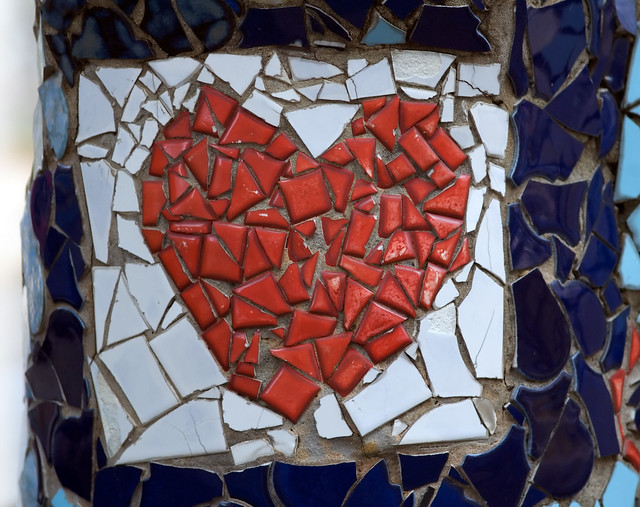
© 2006 David Goehring, Flickr | CC-BY | via Wylio
Today’s guest post is written by Isaac Pollak, head of a Jewish Chevrah Kadisha (Chevrah Kadisha is the “Holy Society” or organization of Jewish men and women who see to it that the bodies of Jews are prepared for burial according to Jewish tradition and are protected from desecration, willful or not, until burial)
Central to religious practice, rituals may often seem intentionally obtuse to the point of irrationality. This, in fact may be their very purpose. By devising rituals that at times seem to make little or no sense to the uninitiated, those who learn to perform the rituals, if not understand them, become part of a distinct community. The fact that rituals often don’t make practical or rational sense is exactly what makes them useful for social identification. The cognitive psychologist Christine LeGare has done a number of studies showing that rituals declare that you are a member of a particular social group. Lewis Mumford the social philosopher, historian and greatest urbanist of the 20th century, makes a clear case that what sets humans apart from other animals is not the use of tools but rather our use of language and rituals and that makes us “Community”. Sharing information and ideas among participants was the foundation of all societies and “community is the most precious collective invention”.
Although there are rituals designed for every aspect of the human life cycle, the rituals surrounding “DEATH” are often the least understood, yet the most often performed.. Even the irreligious may insist upon death rituals for themselves or their loved ones. Matthew Frank in his book Preparing the Ghost speaks about “our need to mythologize , ritualize and spin tails about that which we “fear.”
The greater the lack of comprehension the increased amount of the rituals with DEATH by far more ritualized than any other aspect of a society’s life cycle in every culture. The more the rituals the stronger the bonds of community and social identification. The life cycle events the least understood , emerge earlier and are more deeply rooted .
Witness the tragic murder of three young Israeli teenagers which bought every dimension of Judaism into a unified community-from Ultra Hassidic to Jews for Jesus. Everyone adopted and prayed for these young men ” kol Yisrael Arevim zeh l\L’zeh” all of us are responsible for one another. Death brought us community as nothing else ever could.
A life broken , an individual link lost, paradoxically strengthens the group unity and identity. Rituals give us a sense of control over an area where we have none. Mundane actions are suffused with arbitrary conventions and that makes it important to us and gives us a sense of “being in charge”. Rituals engage members of a community in the collective enterprise of building and sustaining a “PEOPLE.”
Jewish death rituals have a foundation that travels back in time 3000 years and has made us a community like none other. In fact, a new developing Jewish community, has an obligation to set aside ground for a cemetery before setting aside land for a synagogue. How wise were our Rabbis.
Let us preciously value these so vitally irrational traditions and hoary rituals that brings us together to pray, to improve ourselves and to elevate ourselves in response to mysteries we don’t comprehend.
Let me conclude by paraphrasing the German poet Rainer M. Rilke in his letters to a young Poet:
“I beg you to have patience with everything unresolved in your heart and try to love the questions themselves as if they were locked rooms or books written in a very foreign tongue. Don’t search for the answers , which could not be given to you now, because you would not be able to live them. And the point is to live everything . Live the questions now . Perhaps then, someday far in the future, you will gradually, without even noticing it, live your way into the answer.”
*****
Isaac Pollak is President and CEO of an International Marketing Concern for the past 4 decades. He holds graduate degrees in Marketing, Industrial Psychology, Art History, and Jewish Material Culture from City College, LIU, JTS, and Columbia University. He has been the Rosh/head of a Chevrah Kadisha on the upper East Side of Manhattan, NYC, for over 35 decades, and is an avid collector of Chevrah Kadisha mortuary material cultural items, having several hundred in his own collection. He serves as chairperson of the Acquisition Committee for Traditional Material Culture at the Jewish Museum in NYC. Born and raised in NYC, married, with 3 children and 3 grandchildren.
A Symbol in the Sky
You get home from a stressful day working at the funeral home. You change out of your suit and into your comfortable clothes and as soon as you sit down, your cell phone rings.
“There’s a death at such and such place.” And in your head, you’re thinking, “Gahhh! I just … took … my suit off!” It seems to happen all the time.
So you grab the suit that you so carefully hung in your closet, tighten your tie, slap your uncomfortable dress shoes back on your feet and put the drink that you just poured yourself back in the fridge.
Last week, I got home at around 4:30 on a Friday and had just put my feet up. And you guessed it. A death call.
A young woman.
Tragic.
As I drove away from the hospital, the sun set was spectacular. It changed every minute I drove, so I decided to pull out my phone, pull off the side of the snow covered road and take some photos for Instagram.
This is the unfiltered photo:
I ran it through a couple filters on Instagram, posted it and didn’t think anything of it until “casem5” commented, “Am I the only one who sees a woman with long hair in the clouds?”
And then I, too (with the help of my imagination), saw it. A woman’s profile, looking upward into the heavens.
The next day, we showed the family this photo. And of course it touched them. They had experienced pain. Grief. And immense heartache as they had watched their mother deteriorate to death. And when you see this much pain, it can feel as though the world is against you. That God himself has set his face against you.
Call me a skeptic. Call me cynical. But I don’t believe this filtered Instagram photo is a message from the deceased. Or a message from God. This isn’t Jesus toast. I do, however, see it as a symbol … a symbol of goodness … a symbol that maybe God is for us.
And I think it’s helpful to distinguish between symbols and signs.
Symbols are important in death because they can express ideas and feelings where words fall short. And this beautiful sunset was their symbol of their mothers’ peace and freedom from the pain that wrecked her young body. Symbols reach where words cannot. But, reaching for signs … looking for communication from the other side can, at times, be maddening and confusing. It’s dangerous — even neurotic — for our already grieving mind to go looking for signs from the deceased; but symbols are different … because symbols find us … they communicate what we can’t. Whether it be the cross, or a woman in the clouds, symbols help us see the heavens. And this symbol in the clouds gave this grieving family a small glimmer of hope in their hour of darkness. Symbols, like the cross, help us believe. They help us see the heaven in the midst of the hell.
Ritual: The Muscle Memory of Grief
Over the past couple months, I’ve been contemplating why the West (America, Europe, etc.) has so much aversion to death, while other — less “developed — cultures see death as less alien. I’ve come up with two major reasons:
One. Modernity.
Our modern world takes death care away from families and puts it in the hands of “professionals”, thus industrializing death. Instead of the dying dwelling at our homes, we give them to nursing homes. For more of my thoughts on this, here’s an article I wrote.
The modern world also likes providing answers to life’s questions. So when death comes with its silence and mystery, we are rendered uncomfortable.
Two. We lack ritual. There’s three reasons why there’s a lack of ritual:
1.) We tend to be individualistic, which isn’t necessarily bad, but it produces a lack of community.
2). We tend to dislike tradition.
3.) We are becoming post-religious.
The following is my (rather poor) attempt to explain why the lack of ritual increases our aversion to death.
*****
Muscle memory is what separates the professionals from the amateurs.
Muscle memory is what enables musicians to thoughtlessly play complicated music with near perfection.
Muscle memory is the product of laborious habit that makes incredibly difficult tasks seem like minutia.
I just came back from indoor rock climbing.
I’ve seen athletic and strong newbies come to the gym and they look like fools trying to climb routes. Falling down on their bums, scraping their arms up and getting all nervous when they get to the top of the route.
Climbing is both strength and technique muscle memory. And while newbies may be strong and athletic, if they don’t know how to move their bodies on the wall, they’re destined to fall and fail.
*****
Grief is similar. The walls of bereavement are very intimidating to even the spiritually and psychologically strong. It doesn’t matter how whole you are, you will fall and you will fail.
Unless you enter through the trodden paths of ritual.
The muscle memory of grief is ritual. Ritual allows us to take the incredibly difficult task of mourning and find a way to persevere, even when it seems we shouldn’t.
Muscle memory is usually something you or I create through practice. I climb routes at the climbing gym, my muscles get used to moving a certain way.
You practice the guitar day in and day out and your fingers move like jazz.
This is where the whole muscle memory analogy starts to fall apart when we relate it to grief.
While a professional’s muscle memory is something he or she created, death ritual muscle memory is something our community has created and it can only be “learned” within community.
You didn’t create it. It’s something we inherit … or something we can join.
*****
This from Alla Bozarth in “Life Is Goodbye, Life is Hello: Grieving Well Through All Kinds of Loss”:
Funerals are the rituals we create to help us face the reality of death, to give us a way of expressing our response to that reality with other persons, and to protect us from the full impact of the meaning of death for ourselves.
The problem is this: so many of us have disconnected ourselves from community, tradition and a religion that we’ve never received the graces of grief ritual.
If we have community in place,
if we embrace tradition in times of death
and we’re willing to involve the motion and movement of religion,
we may find life and meaning in a task that many onlookers see as insurmountable.
Ritual doesn’t allow you to overcome grief (grief may never be overcome). It doesn’t allow you to work through your grief faster. Nor does make death more tolerable. And it certainly won’t make you a “professional.”
Ritual allows you to confront a seemingly impossible task in the context of community.
Why is the West so adverse to death? Because devoid of ritual, confronting death is like asking me to play Beethoven’s Piano Sonata No. 23.

